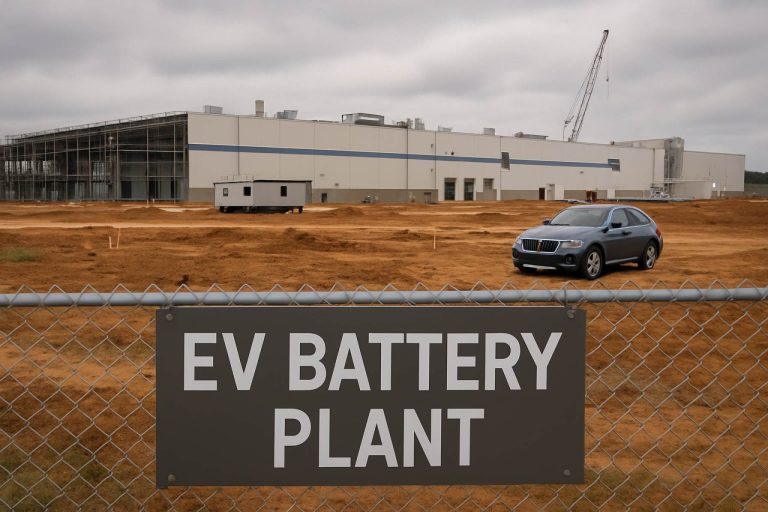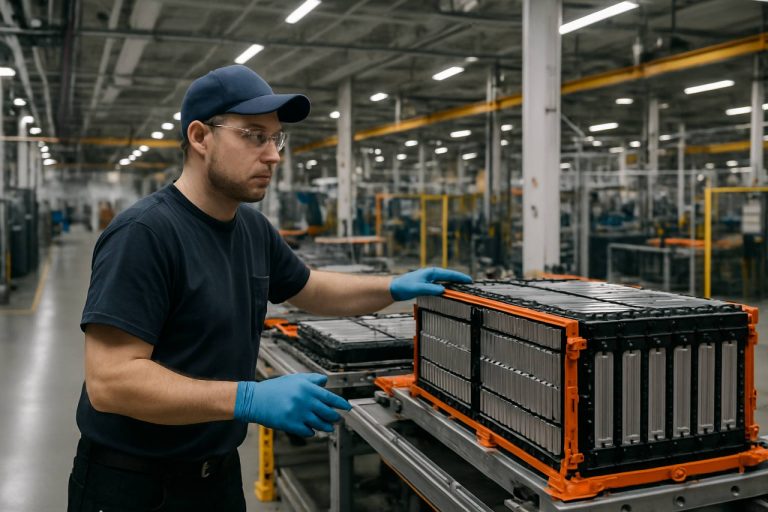
South Carolina’s $1 Billion EV Battery Factory on Ice—What’s Next for the State’s Green Future?
Global EV battery giant AESC freezes Florence, SC facility, putting $1.6B investment and 1,600 jobs on hold amid growing policy uncertainties.
- $1 Billion+ already invested in Florence facility
- $1.6 Billion total planned investment by AESC
- 1,600 jobs slated for creation in South Carolina
- Construction paused due to market and policy uncertainty
The future of South Carolina’s clean energy boom just hit a major speed bump. Japanese electric vehicle battery manufacturer AESC has abruptly paused construction on its colossal new battery factory in Florence, a project already soaked in more than a billion dollars and promised to energize local economies for years to come.
This state-of-the-art plant was destined to power the next generation of BMW electric vehicles manufactured in the nearby Spartanburg facility—a linchpin in the region’s ambitious push for EV dominance.
But tonight, the cranes are stilled, workers are sent home, and economic development leaders are watching closely as policy and market clouds gather over the clean tech horizon.
Why Did AESC Hit Pause on the Florence Battery Factory?
Asked about this dramatic move, AESC pointed directly to swirling uncertainty in U.S. policy and volatility in the global EV market. With incentives for EV manufacturing in question and consumer demand fluctuating, the company says it can’t move forward until there’s more clarity on the roadmap ahead.
AESC has already poured over $1 billion into preparing the Florence site—an indication of their commitment. Now, with $1.6 billion and 1,600 jobs ultimately at stake, both state officials and auto giants like BMW are scrambling to assess next steps.
Which Jobs and Investments Are on the Line?
Florence County residents were counting on a surge of employment—1,600 permanent jobs and countless construction roles—to turn the region into a clean energy powerhouse. Local suppliers and businesses had started to mobilize, eyeing new contracts and upgrades.
BMW’s sprawling plant in Spartanburg, one of the largest in North America, was set to draw batteries directly from the new facility. Now, both local supply chains and South Carolina’s reputation as an EV manufacturing leader are in a holding pattern until AESC gives the green light.
Q&A: What Does the Pause Mean for South Carolina’s Clean Tech Hopes?
Q: How unusual is such a sudden pause?
A: Rare and risky. EV supply chain projects are long-term bets—early disruption could scare off future investments across the Southeast.
Q: Can AESC walk away for good?
A: Company leaders insist the commitment remains. They hope to restart construction once policy and market signals grow clearer.
Q: What are state leaders doing?
A: State and local officials are pressing federal policymakers for clearer, long-term support for EV and battery production. Eyes are on Washington—and the 2025 budget cycle—for new incentives or clarity.
How Can Communities Prepare if Major EV Projects Stall?
1. Local governments are reviewing contingency plans and exploring other economic partners.
2. Workforce development teams encourage residents to continue training in future-proof industries like energy, tech, and automotive manufacturing.
3. Suppliers are urged to diversify, tapping into broader markets while large-scale projects regroup.
4. Follow trusted news outlets like Reuters and CNBC for updates on EV policy trends.
Don’t Let Uncertainty Stall Progress
South Carolina’s EV revolution may be on pause, but the future is still electric. Track policy changes, press local leaders for answers, and stay ready to seize new opportunities as they arise.
Action Checklist for Communities & Job Seekers:
- Monitor updates from AESC and local government
- Continue skills training in manufacturing and technology
- Ask employers and schools about EV-related programs
- Engage with lawmakers—voice support for stable clean energy investment
- Stay tuned to reputable sources for the latest policy developments



